For Those Who Came in Late: We now continue our exploration of DC’s Justice League of America, in its various incarnations. When we left off, the experimental “New Justice League of America,” a.k.a. Justice League Detroit, had just failed rather miserably due to a lack of starpower and uninspiring scripting, and had just been put out of its (and the readers’) misery. What next, you ask? A return to greatness that’s much misremembered and underrated today, if you ask me. Come with me now as we begin our look at the heady days of JUSTICE LEAGUE INTERNATIONAL…
In 1986, the newly reminted DC Universe was crying out for a revitalized Justice League after the universe-shattering events of CRISIS ON INFINITE EARTHS, and DC editors wisely realized that losers like Vibe and Gypsy weren’t gonna make the cut. Rather than merely dumping the old team and starting the series over, DC elected to make the formation of a new Justice League the focus of that year’s big summer crossover, the follow-up to the wildly successful CRISIS.
Plotted by John Ostrander and scripted by Len Wein, and pencilled and inked by John Byrne and Karl Kesel, the six-issue LEGENDS miniseries focused on Darkseid’s attempt to make the Earth more ripe for conquest by depriving the world of its heroes, in the hopes that destroying the very concept of heroism in the form of these legendary figures would render Earth’s population more compliant, and thus more easily subjugated. Yes, it’s a bit of a stilted idea to hang a miniseries on, I realize that, but I think after the ultra-convoluted nightmare of CRISIS the year before, DC was just looking for a premise strong enough to hang some big fight scenes on, and not really concerning themselves too much with stuff like intricate plotting or subtext.
Anyway, while Darkseid-created monsters like Macro Man and Brimstone (who of all people made an appearance on the premiere episode of JUSTICE LEAGUE UNLIMITED) begin tearing up cities, creating massive property damage and prompting normal folks to resent the superheroes in their midst. 
In addition, Macro Man’s faked death at the hands of Captain Marvel prompts young Billy Batson to give up his magic word forever, removing one legend from Darkseid’s path rightaway.
In the second part of the Apokoliptian dictator’s plan, Darkseid sends his minion Glorious Godfrey to Earth, where the hypnotic master of persuasion poses as television talking head G. Gordon Godfrey, who fans the flames of fear and paranoia against Earth’s heroes, creating a climate so volatile that the President is forced to issue a presidential order making all “superheroic” activities illegal.
You may have noticed mention of Captain Marvel above. That’s because LEGENDS, as the first big crossover event to take place since the uniting of all of DC’s parallel Earths in CRISIS ON INFINITE EARTHS, took full advantage of the company’s newfound simplicity, incorporating heroes formerly separated by separate universes, such as Captain Marvel, Dr. Fate and the Blue Beetle. And as we’ll see shortly, their inclusion was by no means coincidental.
Soon Godfrey has unveiled the final step in his operations on Earth with the arrival of the Warhounds, cybernetic doglike war machines from Apokolips which utilize a human host, drawn from Godfrey’s hypnotized followers. Godfrey, his Warhounds and a mob of followers descend on Washington, D.C., where they congregrate at the Lincoln Memorial in preparation for the overthrow of the United States government.
In response, Dr. Fate gathers Earth’s most powerful and prominent heroes to confront Godfrey and his forces: Captain Marvel, the Black Canary, Green Lantern Guy Gardner, the Blue Beetle, Batman, Flash, Superman and the Teen Titans’ Changeling.
Yeah, I’m not quite sure how Changeling made the cut, either.
Arriving late to the party are the Martian Manhunter, fresh from the destruction of Justice League Detroit in the pages of the final issue of JUSTICE LEAGUE OF AMERICA, and Wonder Woman, whose history and continuity had been completely rebooted in the wake of the CRISIS, and who accordingly made her debut appearance to her fellow DC heroes in these pages. The assembled heroes defeat the Warhounds, while an injured Robin, who had been nearly beaten to a pulp in an earlier anti-hero riot, leads a cadre of children to convince the mob to come to their senses. Finally, when a desperate Godfrey tries wearing Dr. Fate’s stolen helmet, hoping to usurp Fate’s power, it instead wipes his mind entirely, putting an end to Darkseid’s scheme.
After the threat is ended, Dr. Fate suggests that the heroes remain together as a force for justice. Although Wonder Woman disappears and Superman, Changeling and Flash refuse for reasons of their own, the remaining heroes agree, and it’s left to the Blue Beetle to say the name that everyone is thinking:
The new League made its first official appearance in the debut issue of their own series, JUSTICE LEAGUE #1 (May 1987), with plots and breakdowns by Keith Giffen, dialogue by J.M. DeMatteis, and pencils by newcomer Kevin Maguire.
As editor Andy Helfer told it in the letter columns in early issues of the series, Giffen had been haranguing Helfer for some time for a chance to take over the JLA, even slipping notes under the editor’s door reading “GIVE ME JUSTICE LEAGUE!” and the like. DeMatteis had impressed Helfer with his characterizations on books such as GREENBERG THE VAMPIRE and MOONSHADOW, and the decision was made to team him with Giffen on the writing. As for Maguire, he was a complete rookie, his only professional work having been a stint in Marvel’s production department as one of “Romita’s Raiders,” a pack of young artists enlisted to do minor art fixes and such as a sort of on-the-job training. The decision to go with the untested Maguire, though certainly risky, turned out to be genius, as Maguire’s unusual style gave the new JUSTICE LEAGUE book a completely unique flavor, as well as, by sheer chance, being perfectly suited for the unexpected direction the series would eventually take.
As for the lineup, while nowadays the Giffen/DeMatteis team is misremembered as a bunch of second-raters and third-stringers, it’s clear when looking at the group in context that not only was DC putting their biggest characters behind it, but consideration was given to retaining a link to the team’s history, as evidenced by the inclusion of original members Batman, J’onn J’onzz and Black Canary. (Superman and Wonder Woman were both withheld from the team by editorial request, having both been relaunched in high-profile new series and continuities.) As for the new members, Guy Gardner was one of several primary Green Lanterns at the time, co-starring in the GREEN LANTERN CORPS series with John Stewart and a mess of alien GLs, Blue Beetle was the star of his own highly promoted new monthly series, and Dr. Fate and Captain Marvel were arguably two of DC’s most popular characters who’d rarely had their own book, and who’d never been utilized in the JUSTICE LEAGUE series due to the whole parallel-Earths business. So it’s no exaggeration to say that DC was putting their big guns behind this new League from a character standpoint. Unexpected additions to the team were Mr. Miracle and his assistant Oberon, and the female Dr. Light who’d debuted during the CRISIS, although her stint in the new League was remarkable only for its brevity, making her exit after barely three issues.
The new League’s story begins in “Born Again,” in which the new team gets off to a bit of a rocky start, after the obnoxious Guy Gardner declares himself the team’s new leader, sparking a bit of a “get-to-know-you” brawl:
That is, until the League’s actual leader shows up and swiftly calls things to order:
The League’s first meeting is interrupted by a distress call from their newest member, Dr. Light, who’s trapped in a terrorist kidnapping at the United Nations. Complicating matters only slightly is the fact that the League never invited her to join, nor did they give her a signal device. The League head out nonetheless, and learn on the way that one of the terrorists has an explosive device grafted to his heart, set to go off should his heart stop beating.
The League swiftly subdues the terrorists – too swiftly, in fact, as Batman quickly realizes something is up and withdraws his forces, allowing the terrorist leader to kill himself, a death that comes without any accompanying explosion. As the new Justice League’s first official mission, the U.N. rescue garners plenty of publicity, a situation appreciated (and apparently arranged) by the mysterious Maxwell Lord, a corporate type manipulating the team from afar, who not only invited Dr. Light to join and gave her the JL signal device, but also failed to give the terrorist leader the firing pin to his bomb/ Everything about this first issue was a startling change, both from the awful JL: Detroit comics that had immediately preceded it, and from the classic Satellite-Era JLA tales of old. (Although a necessary tip of the hat was included to the past, with this scene of a mournful J’onn taking a moment to acknowledge the League’s recent losses:)
Already, the plot was mysterious and exciting, while DeMatteis’ razor-sharp dialogue crackled with tension and wit. (Despite what people seem to think, early issues of JUSTICE LEAGUE were dead serious, with the trademark DeMatteis wit being used to lighten things up. It wasn’t until much later the book would alternate between outright comedy and drama, but we’ll get to that down the road a bit…) Unlike the stale, predictable tension of the Detroit team’s “angry-young-man” Vibe and “sexual-predator” Vixen, here was a team with real conflicts based on more grounded and recognizable issues, with the conflict between the brash, Reagan-loving right-wing Guy Gardner and, well, just about everyone at the forefront. Also in the mix were Captain Marvel’s insecurity about being ready for the team, Mr. Miracle’s uncertainty about whether he even should have joined, and Beetle’s growing dissatisfaction with his limited role within the League. Top it all off with Batman’s growing exasperation with his teammates, and what you get is a supremely effective super-team rife with internal conflict, not at all like the camaraderie-filled days of the old League.
In bringing a focus on personality conflicts and character interplay to the new series, Giffen and DeMatteis found the perfect collaborator in Kevin Maguire, whose facility with conveying emotions through facial expressions and posing can be seen right away with the much-copied and “homaged” cover to the first issue, showing a supremely pissed-off-looking Justice League glaring up at the camera. Maguire’s storytelling, at least early on, shows a bit of George Perez influence in its high panel count, although much of that can most likely be attributed to Giffen, who plotted the book with thumbnail drawings. However, it was Maguire’s faces that really caught people’s attention, with his sadistic grins and resigned pouts that brought the characters to life in a way readers had never seen before. Also on display was Maguire’s affinity for real-life likenesses, such as his Peter Jennings and Connie Chung cameos, or the more obvious “casting” of actor Sam Neill as the new Maxwell Lord character. Maguire also preferred a more realistic style in terms of rendering, as his Leaguers looked more like real people wearing real cloth costumes than JLA readers were accustomed to seeing, (particularly his Batman, which looked more like a guy in a bat suit than any version of Batman since Adam West).
Also contributing to the all-new look of the series was letterer Bob Lappan, who brought a more subtle, understated style to the lettering reminiscent of Tom Orzechowski’s groundbreaking work on UNCANNY X-MEN. Even more apparent was Lappan’s bolder style for sound effects, such as his slowly rising “MMMMMMM” for the teleport tubes, or the pointed “BEEPEEPEEPEEP” for Dr. Light’s abrasive JL signal device.
Right from the get-go, it was clear: this wasn’t either of the Justice Leagues readers might remember.
Things heated up in the next issue, “Make War No More!”, in which Batman and J’onn J’onzz question Dr. Light about who exactly invited her into the League, while news breaks about a trio of superheroes dismantling nuclear missiles throughout the Middle East.
The trio, a thinly disguised takeoff on Marvel’s Avengers, are refugees from their own otherdimensional homeworld, destroyed in a nuclear holocaust. Wandjina, Silver Sorceress and Bluejay make the journey to Earth and resolve not to let another world share their home’s fate. Unfortunately, they fall in with bad companions when they arrive, allying themselves with Bialyan dictator Rumaan Harjavti, who begins advising the three heroes to take out targets of his choosing. After a first encounter with the Justice League, the three take refuge in Bialya, where Batman is forced to allow them to remain out of respect for the rogue nation’s borders.
The conflict comes to a head in JUSTICE LEAGUE #3 (July 1987), “Meltdown,” in which the Justice League races to prevent Wandjina and company from destroying a Soviet nuclear plant, while also trying to keep the Reagan-loving Guy Gardner from singlehandedly dismantling the Rocket Red Corps, the U.S.S.R.’s platoon of super-armored soldiers.
The conflict between Guy and the Ruskies degenerates into a full-on brawl between the League and the Rocket Reds, illustrated with flair by Giffen and Maguire.
 I particularly like the way Maguire draws the Rocket Reds as slightly stiff and unwieldy, as if they have difficulty moving in their clunky Russian-technology armor.
I particularly like the way Maguire draws the Rocket Reds as slightly stiff and unwieldy, as if they have difficulty moving in their clunky Russian-technology armor.
Unfortunately, in the panic caused by the unexpected onslaught of superheroes, the Russian nuclear-plant technicians try to shut down the plant too fast and inadvertently cause a meltdown in the reactor core, a circumstance that even the Justice League seems ill-prepared to handle.
Wandjina, unwilling to see another world lost to nuclear armageddon, smashes his way into the plant and manages to somehow avert the meltdown, but at significant cost, suffering massive radiation poisoning. It’s not much of a victory for the League, as Wandjina, the Sorceress and Bluejay are kept in protective custody by the Soviets, and the Justice League is ordered to leave the Soviet Union, pronto.
As if their less than triumphant trip to the U.S.S.R. wasn’t frustrating enough, the League returns to their supposedly secret headquarters, to find Maxwell Lord (whom they’ve still never met nor even heard of) waiting inside, ready to introduce them to their next new member: Booster Gold.
Which is where we’ll pick things up next week.

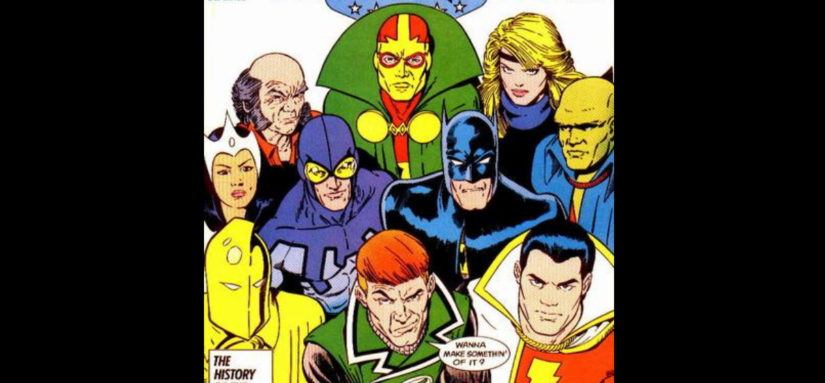
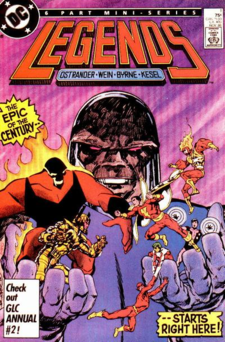
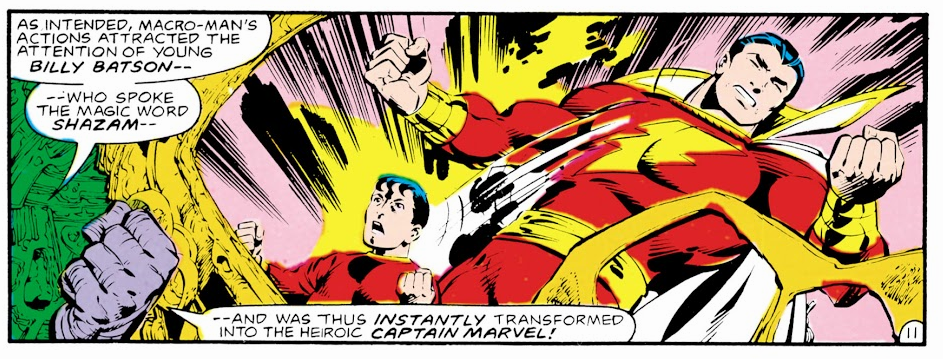
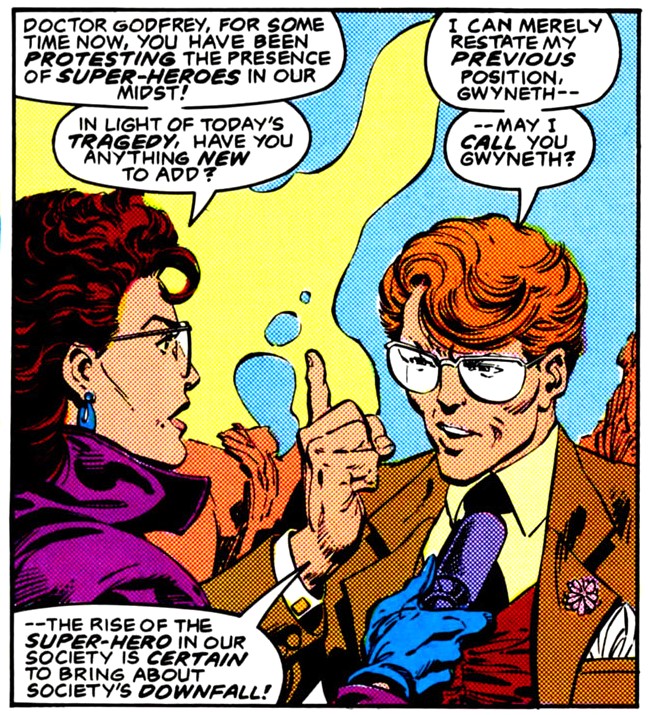

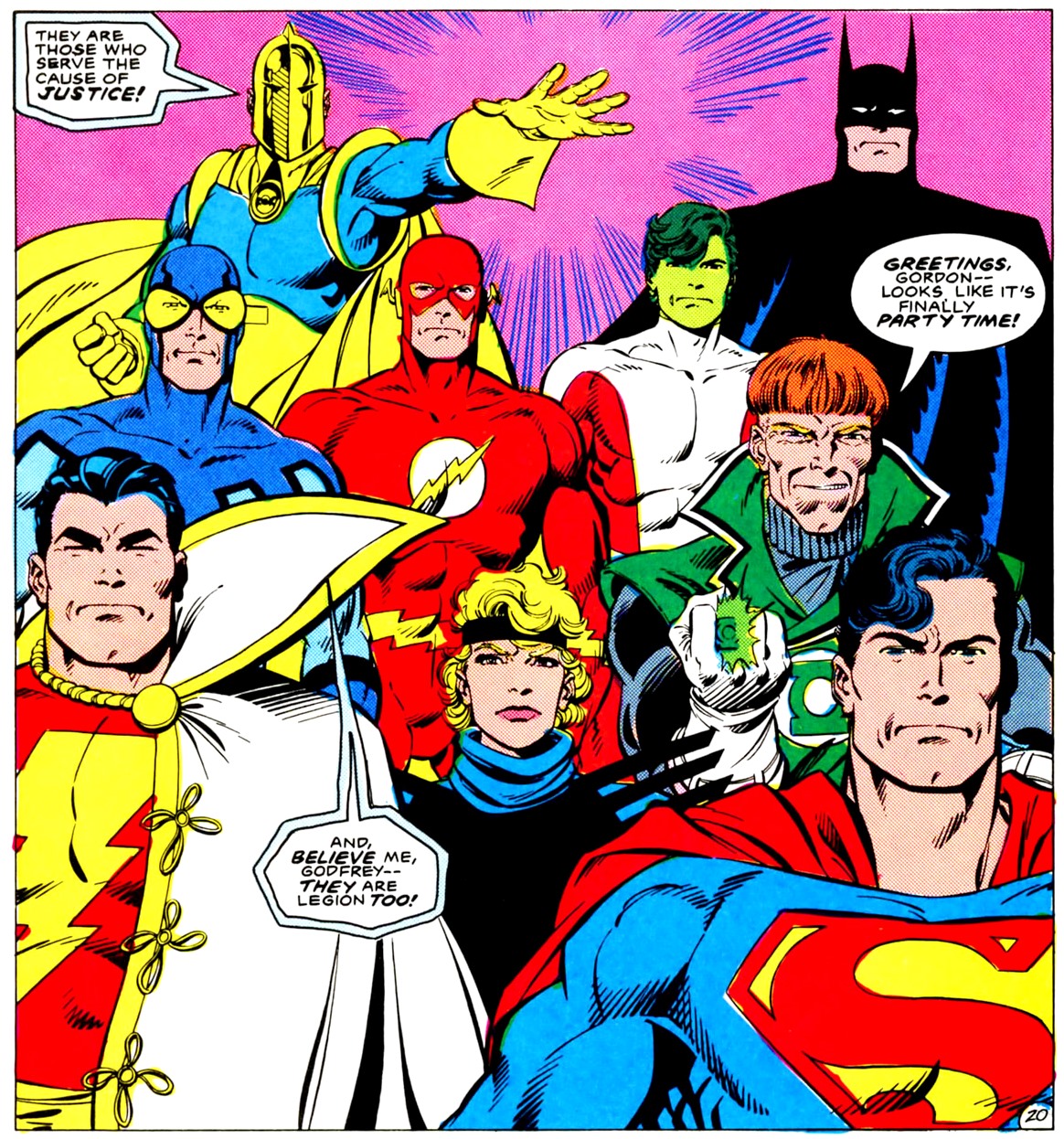
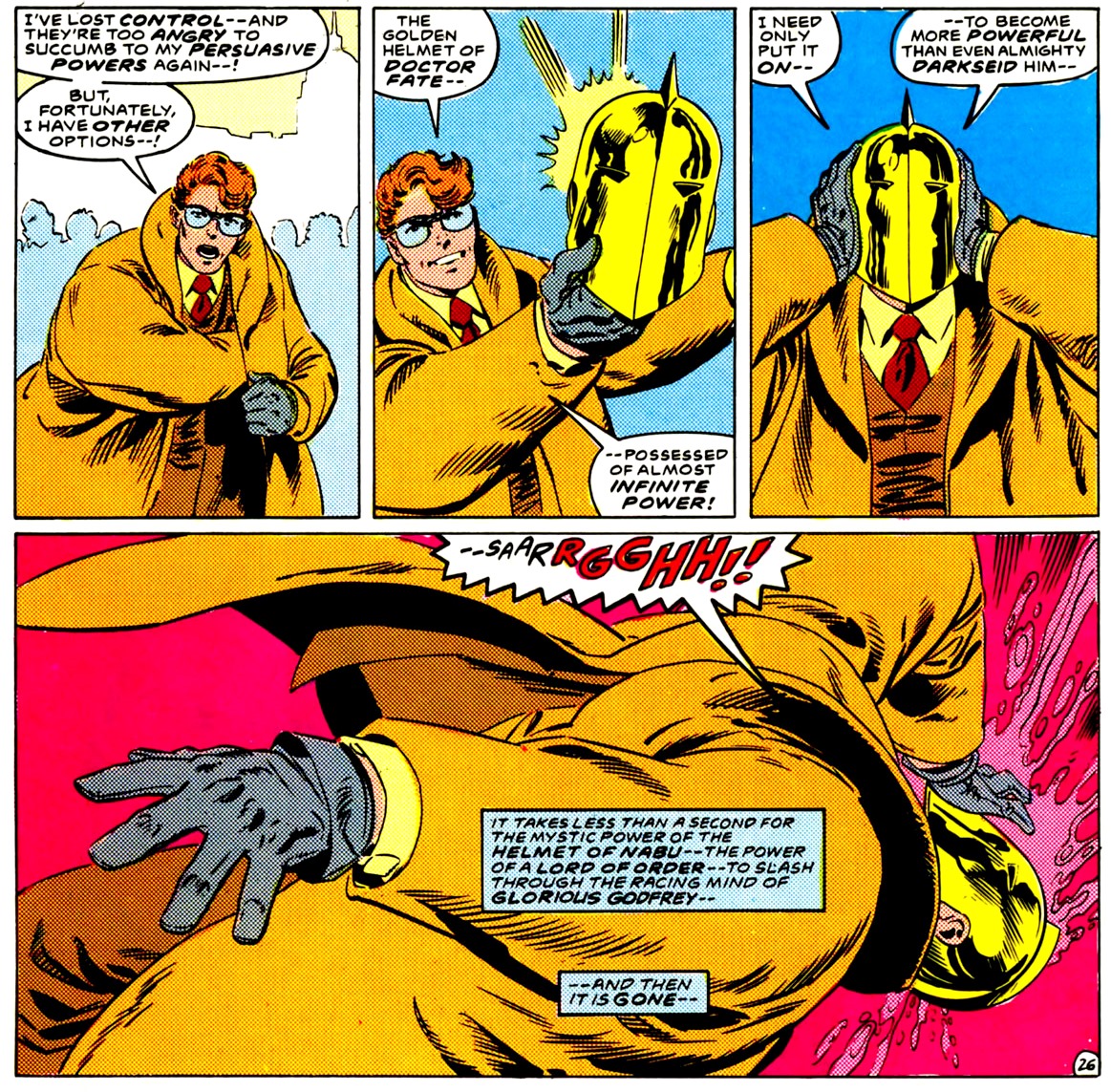
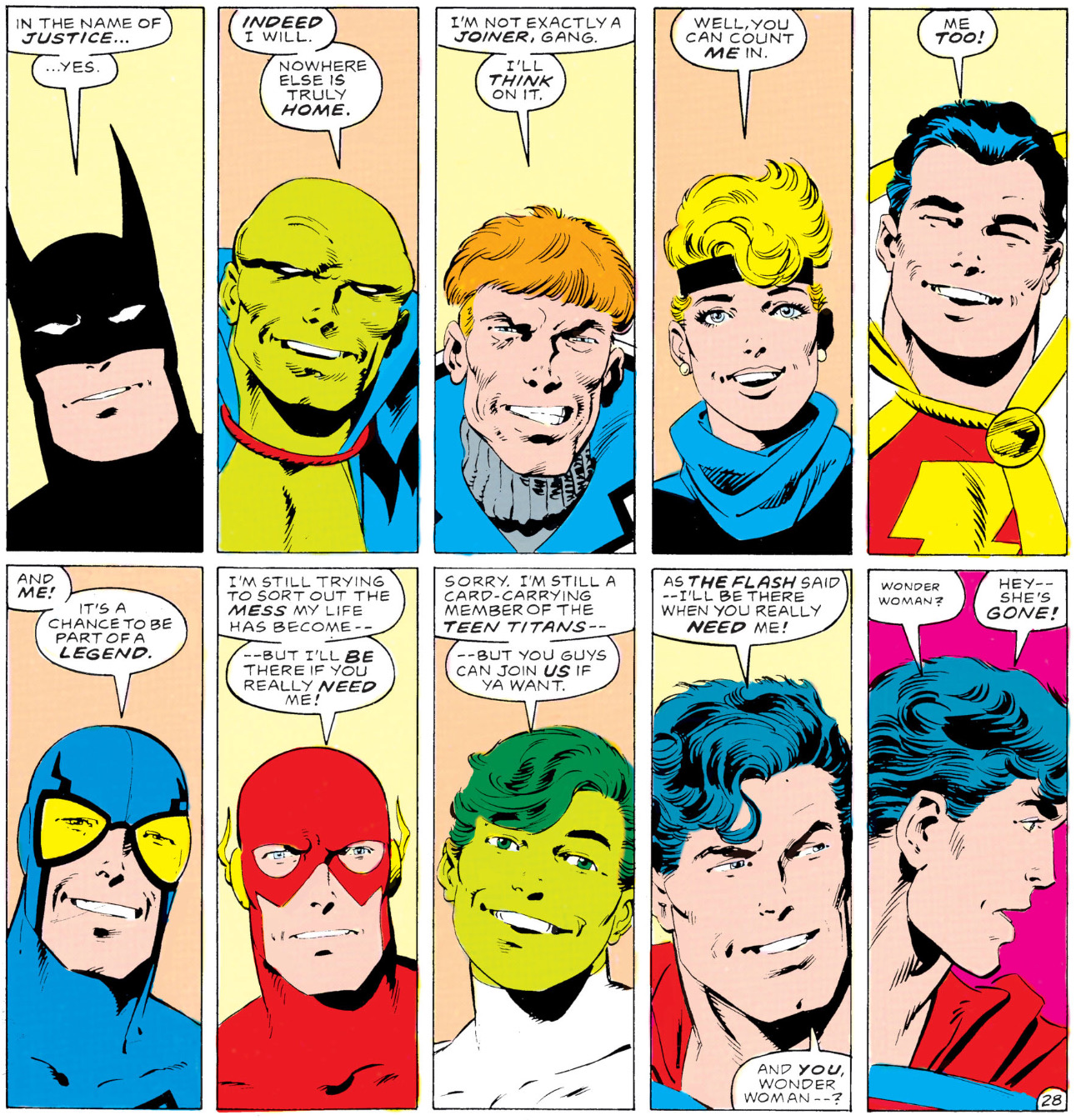
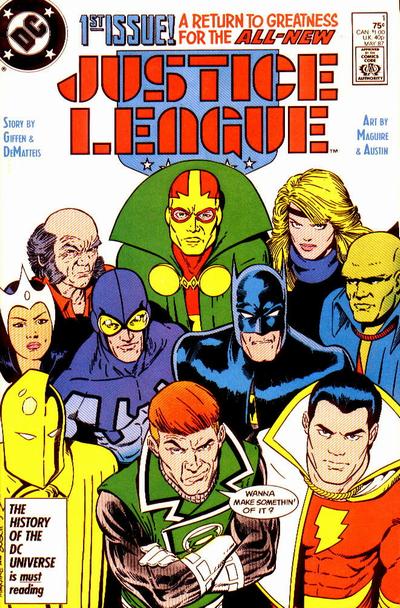
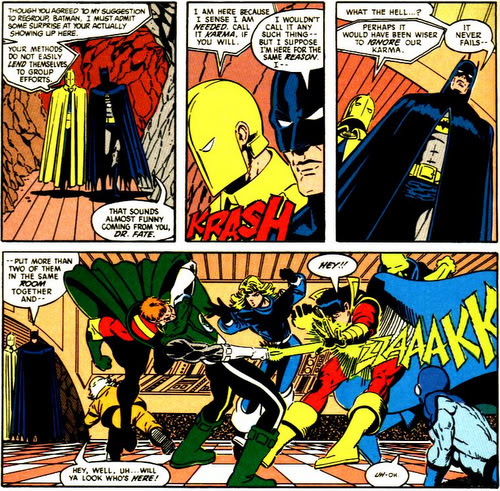
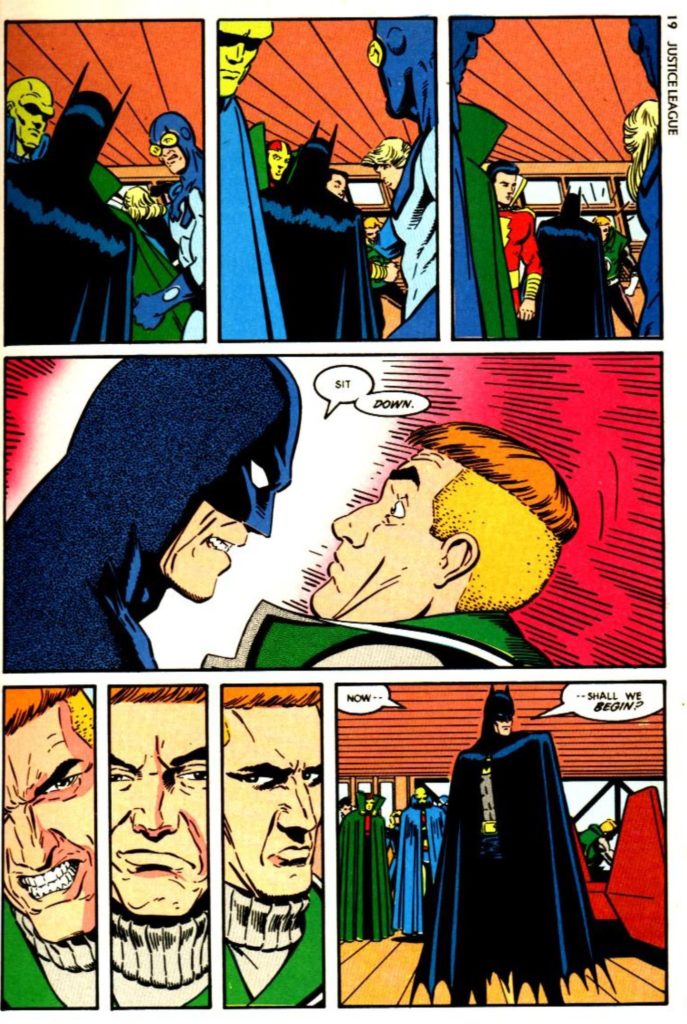
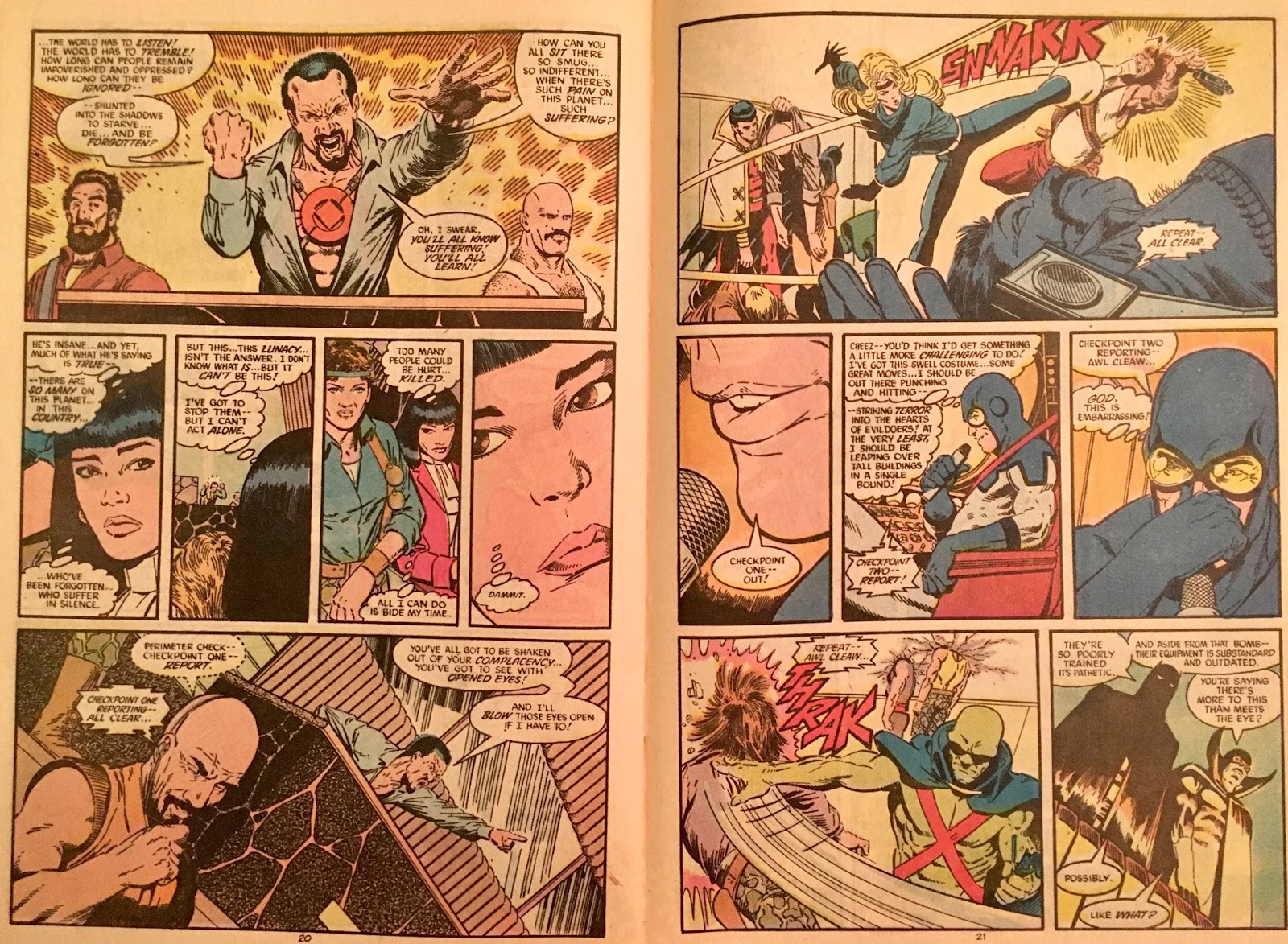
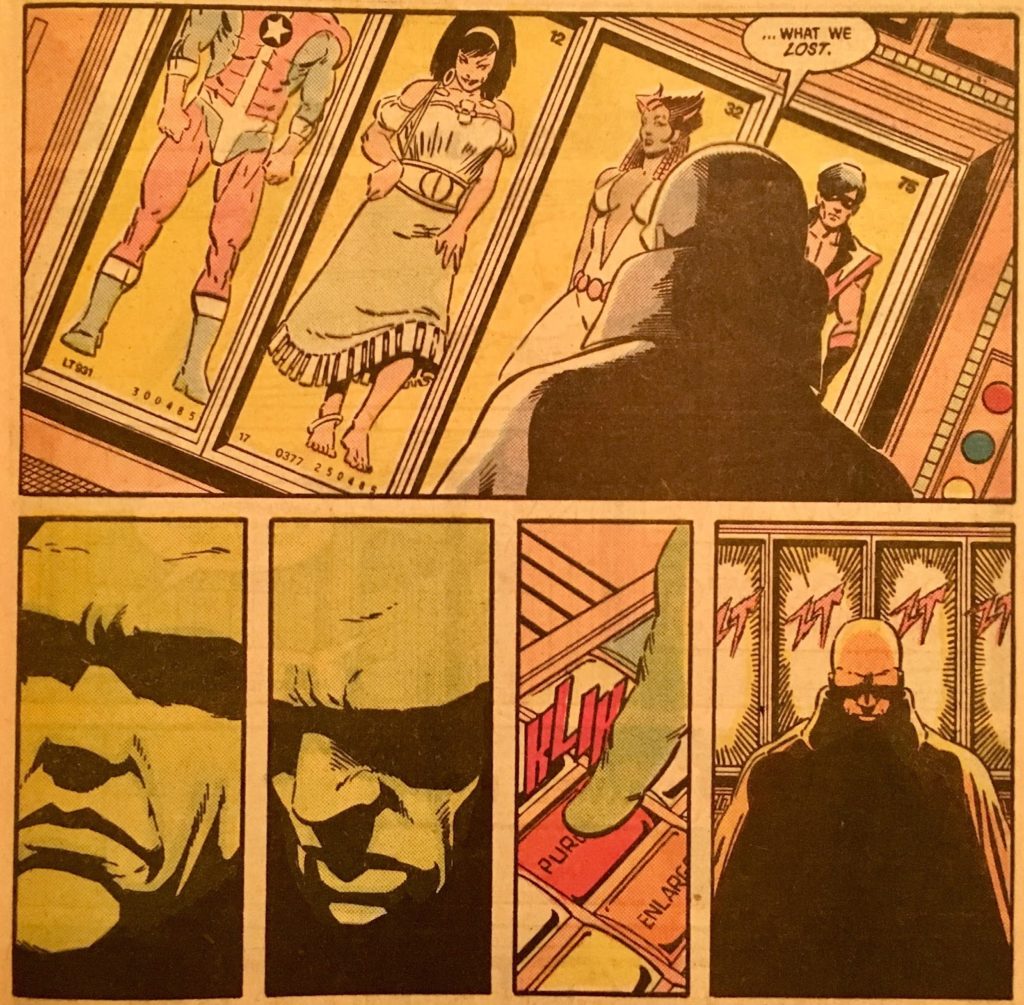
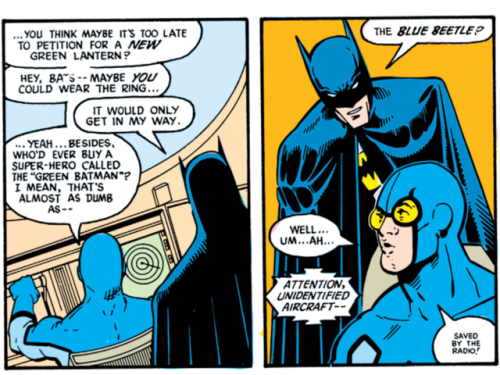
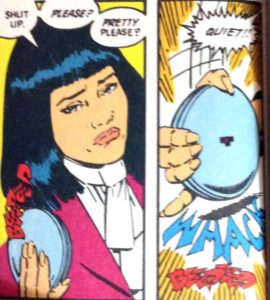
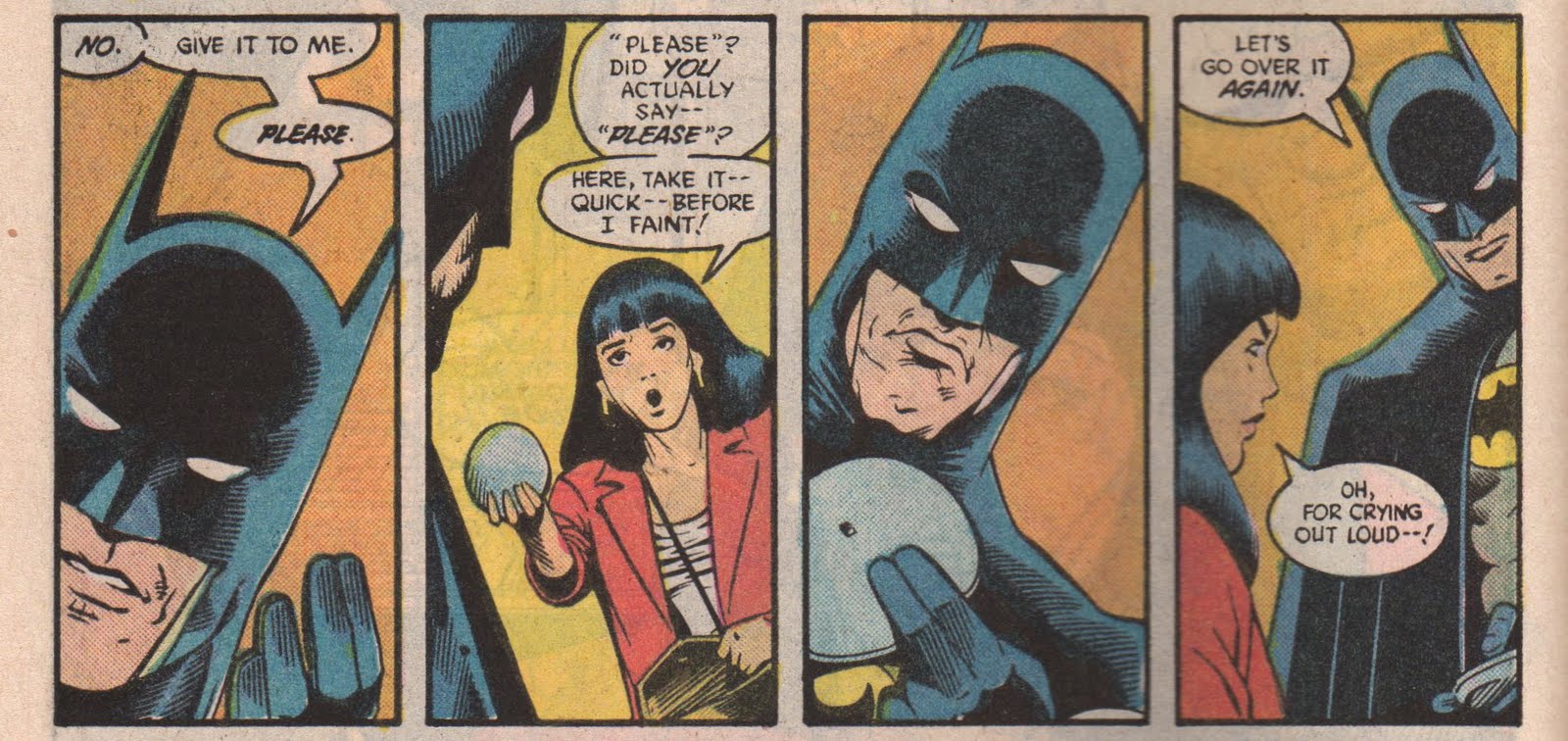

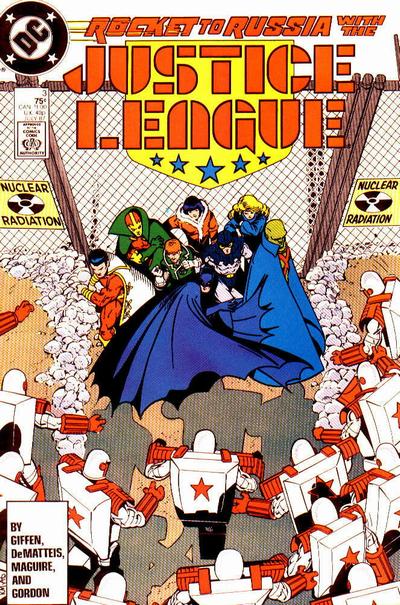
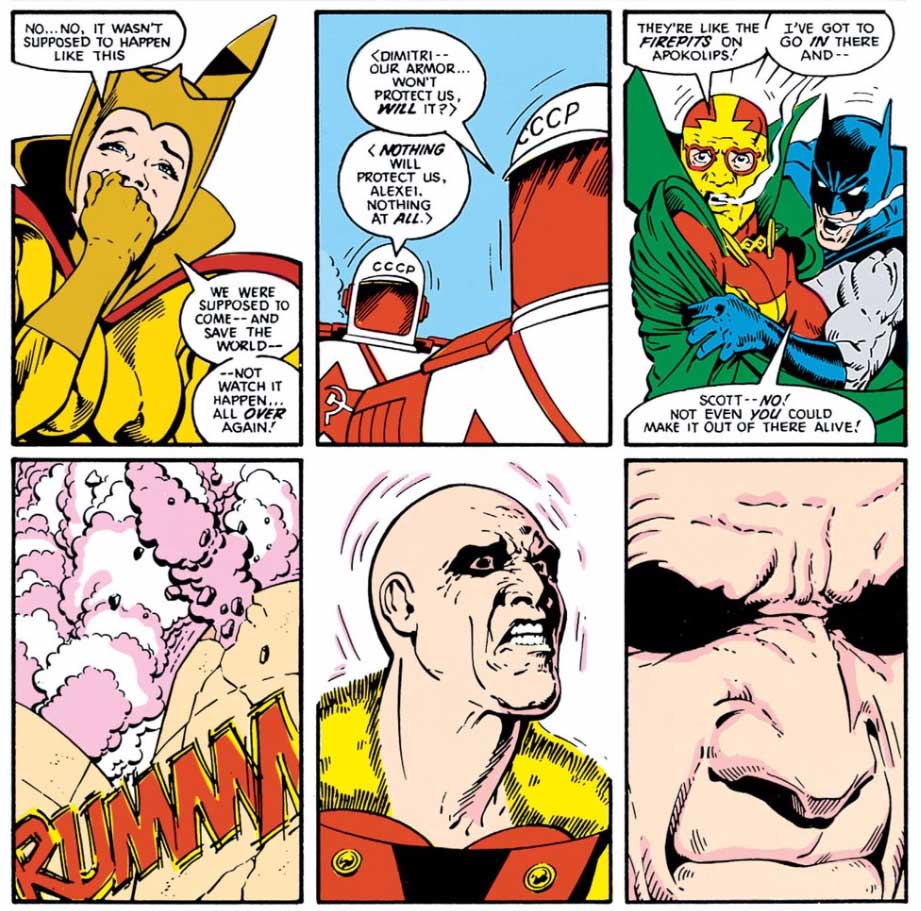

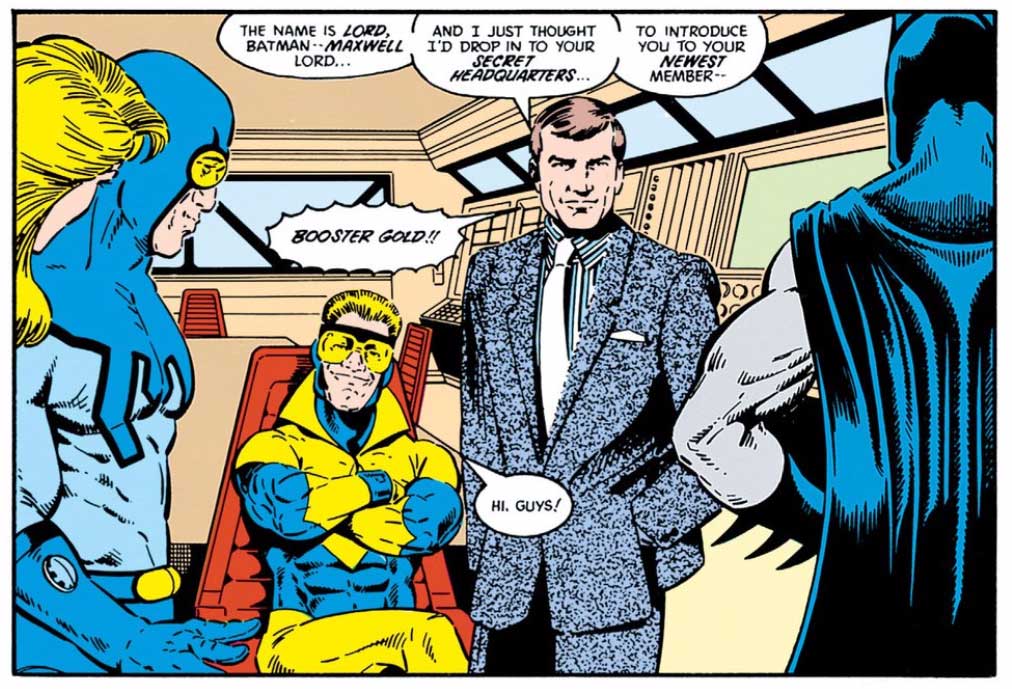
Comments are closed.